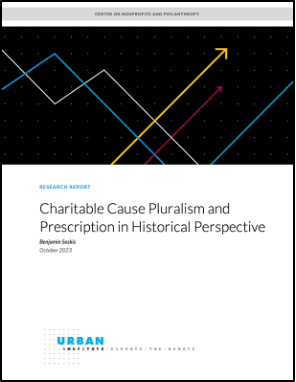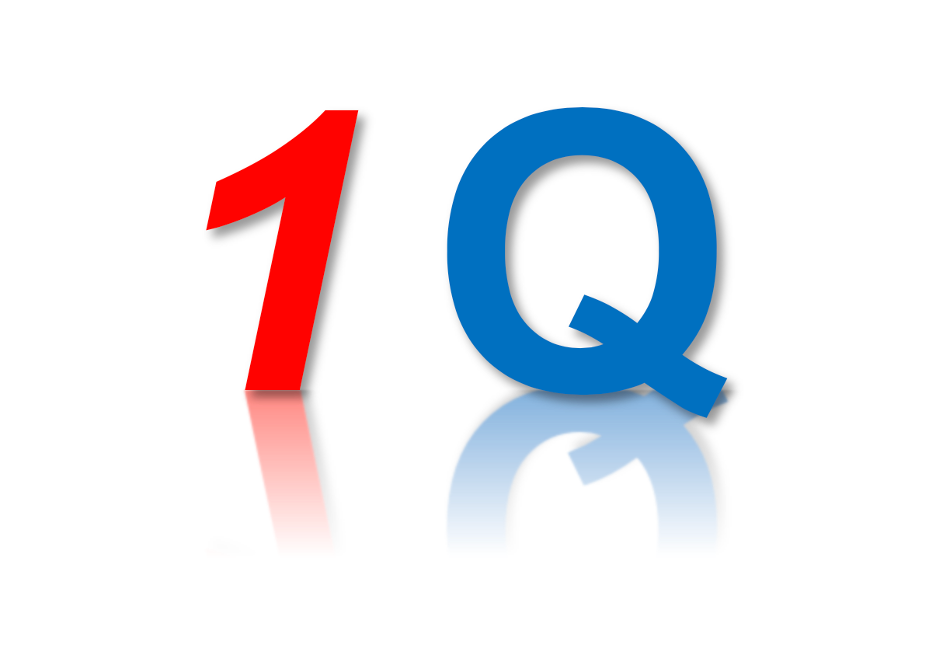Quick reactions to the new report from Ben Soskis on two schools of thought about philanthropy—whether a diversity of charitable causes supported by donors is itself a good thing or, alternatively, some causes are more worthy of support than others.
The Urban Institute recently released a research report by philanthropy historian Benjamin Soskis, Charitable Cause Pluralism and Prescription in Historical Perspective. The report “maps out the roots in the United States of the long-standing commitment to charitable cause pluralism,” as Soskis describes it, “defined here to mean a belief that the wide diversity of causes supported by donors is itself a good that should be defended and preserved,” and the subsequent “embrace of charitable and especially philanthropic cause prescription and prescription,” defined to be “the insistence that some causes are more worthy of charitable support than others.”

What do you think about the report’s framing and analysis of the relevant issues, and where do you think it might be most helpful for the conversation that it has started to go next?
***
Jeffrey J. Cain: Most voluntary acts of kindness, generosity, and charity don’t call attention to themselves, occur outside of the U.S. tax code, and are in their multitude and diversity pluralistic.
There is an assumption of pluralism at the heart of the American enterprise that extends to charitable acts that don’t seek special government recognition or treatment.
There is another, more limited class of charitable acts that claim preferential regulatory treatment by government. To what degree these charitable acts should be recognized for preferential tax consideration is often, as Ben Soskis points out, a subject of disagreement.
What the pugilists in the current “debate” over philanthropic pluralism would have us believe is that any change to current laws governing tax-incentivized philanthropy is somehow a threat to all acts of charity, kindness, voluntarism, and generosity.
This is false, as Soskis’ work illustrates: contests over charitable tax regulations are inherent to tax-incentivized charitable giving and unfold with a presumption of pluralism. They do not in themselves threaten pluralism. It is disingenuous to suggest otherwise.
Kristen Eastlick: Ben Soskis excellently describes the challenges inherent in defending and promoting a pluralistic philanthropic landscape. I think the discussion that his paper has started would benefit from a recognition that the scope of philanthropy, as currently practiced, now exceeds purely charitable grantmaking recipients.
My colleagues at the Capital Research Center, among others, have documented the growingly perverse intersection of politics and charity. While tax law and regulations have long ostensibly prohibited the use of tax-exempt contributions for political ends, most political donors understand the value of giving tax-free contributions to a (c)(3) connected to a (c)(4) that subsequently gives to a PAC, as David Callahan has pointed out.
I think the discussion that Soskis’ paper has started would also benefit from a recognition that policy-oriented philanthropy, whether pluralistic or prescriptive, is not ideologically balanced. Among policy-oriented funders, left-of-center and progressive ones have overwhelmingly lopsidedly outspent conservative and libertarian ones.
The ongoing discussion about pluralism and prescription in philanthropy should address the damage that its politicization is wreaking on trust in it. This would lead to better diagnoses and remedies for reform.
Michael E. Hartmann: Ben Soskis’ report provides, as one would expect from him, an admirably fair and accurate description of that which has been and is going on in philanthropy in America—and its analysis, as one would also expect, is measured, informed, and helpfully insightful.
I would see further benefit in the conversation that his paper has started if it included at least some in-depth exploration of what he calls “another dynamic behind the stalemate” between charitable cause pluralism and prescription: “the relationship between large- and small-scale giving.” In fact, according to Soskis, the stalemate “is in part traceable to the fact that prevailing attitudes toward how to assess large- and small-scale giving are pulling in opposite directions.”
If the larger, establishment philanthropies have increasingly become and remain prescriptive, and smaller givers retain some semblance of the pluralism being used to defend all of philanthropy’s policy-privileged prerogatives, what does that portend for the continued success of that defense?
More largely, Soskis does not overlay an ideological layer onto his characterizations of what would be, in an oversimplification of his analysis here, the “big prescriptors” and the “smaller pluralists.” He needn’t, of course. “Cause pluralism,” after all, isn’t necessarily ideological pluralism—though I think it’d be fair to note that there’s a pretty strong relationship between the causes chosen by prescriptive Big Philanthropy and its dominant ideological worldview.
In any case:
- if tax-incentivized, mono- or oligo-causal Big Philanthropy is overwhelmingly progressive and, because of its size, the beneficiary of much more raw-dollar incentivization from government funds; and,
- small donors represent a much-wider set of worldviews that may even include some establishment-scorned conservative ones; then …
What does that portend for the latter’s willingness to continue to have to contribute to the taxpayer pool of funds from which the former’s much-larger incentivization is drawn?
Craig Kennedy: Soskis has written a smart essay on the tensions between philanthropic pluralism, on one hand, and attempts to prescribe and proscribe philanthropy on the other. In his first paragraph, he quotes a commentator as saying “When did we get to a place where we feel comfortable criticizing other people’s altruism?” That quote sums up the real issue at stake in this debate: is it okay to criticize how philanthropic money is used? I would say it is not only okay, but also essential to the accountability and dynamism of the charitable sector.
Soskis acknowledges that there are legal proscriptions and prescriptions embodied in law and regulation. But his focus is on how various interest groups, rating agencies, and the media try to pressure, shame, and critique foundations and other donors to support certain causes and avoid others.
I have often wondered why the philanthropic sector believes it should not be subject to this kind of public scrutiny. We should not only feel comfortable in criticizing “other people’s altruism,” we should encourage it as the means by which competing priorities are judged and evaluated. If a donor truly believes that her priorities are the right ones, she should be willing to put up with this sort of badgering as long as it does not veer into the realm of the illegal. Many donors think that they should be exempt from any questioning of their programs. The philanthropic sector has very limited mechanisms for encouraging accountability. Criticism, public and private, is one of the few that seem to make a real difference.
Daniel P. Schmidt: Ben Soskis has written an excellent paper placing in historical context our country’s commitment, dating from the founding through 250 years or so, to the charitable cause of pluralism. From these early foundations of charitable-cause pluralism, Soskis proceeds to smartly detail how “a “celebration of mass giving” was transformed by the onset of professional philanthropic careerists in the mid-20th century on to the present.
In Soskis’ view, pluralism gave way and accepted an “uneasy accommodation” with prescription. This accommodation appears to be particularly one-sided. Pluralism appears to have been subsumed into prescription.
“Nonprofits of the world unite.” Time to transform the world. Charity necessarily sets it sights on the local soup kitchen, while philanthropy prioritizes according to Davos.
Fyodor Dostoevsky’s The Brothers Karamazov educates us in this regard. Father Zosimas, the elder, speaks to a woman outside church, a woman who came for counsel admitting to suffering from a lack of faith. “‘It’s just the same story as a doctor once told me,’ observed the elder. … ‘I love humanity,’ he said, ‘but I wonder at myself. The more I love humanity in general, the less I love man in particular.’”
Soskis’ work also brings to mind Adam Meyerson’s Philanthropy Roundtable essay commemorating the life and work of Milton Friedman on the occasion of his passing in November of 2006. Meyerson reminds his readers of Friedman’s understanding of the centrality of philanthropy in a free society—non-coercive and pluralist.
Philanthropy in its essence is voluntary, and Friedman saw charitable activity as the ally of voluntary exchange in the economy. He argued that market capitalism and philanthropy go together, and that it was no accident that 19th-century America, the great age of individualism and limited government, “was the period of the greatest private eleemosynary activity in the history of the United States.”



